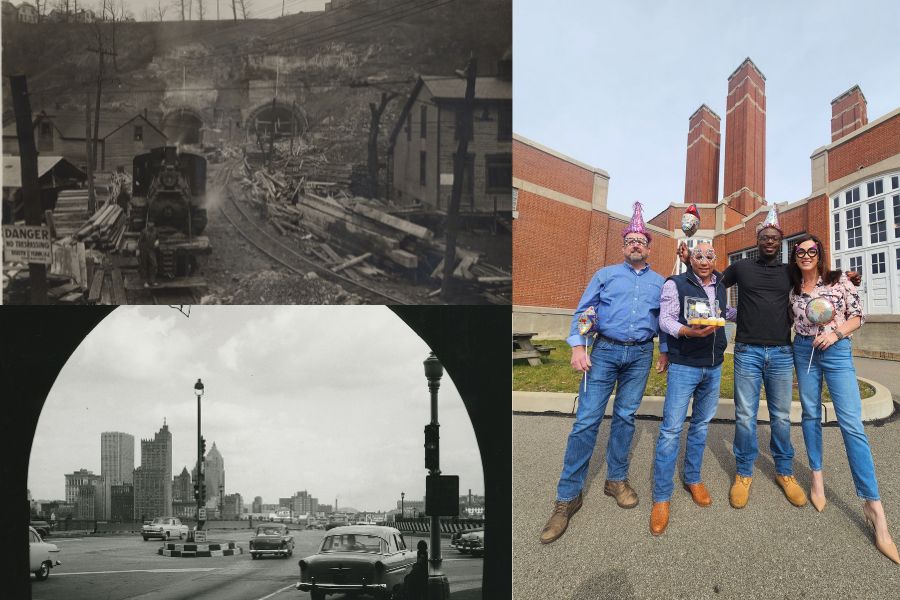The Liberty Tunnels in Allegheny County have celebrated a major milestone this year – they turned 100 years old! Located beneath Mt. Washington, the Liberty Tunnels lead motorists from the South Hills to the City of Pittsburgh. The tunnels were designed to shorten the commute for travelers in the Pittsburgh area; rather than go around or over Mt. Washington, travelers could go directly through the mountain.
Construction of the tunnels started in December 1919, though they did not open to traffic until January 30, 1924. The construction crew carved out more than 400,000 tons of dirt and rock to create two horseshoe-shaped tubes, nicknamed "The Liberty Tubes."
The tunnels have undergone many renovations in the last 100 years. In 1924, a ventilation system, consisting of four shafts with intake and outtake fans, was built to vent carbon dioxide from vehicles. Each ventilation shaft is approximately 200 feet high. The shafts are connected to the historic ventilation building called the Liberty Fan House, which is located on Mt. Washington. The fan house was also built in the 1920s to help maintain the ventilation system and air flow in the tunnels.
Another major renovation consisted of the removal of the pedestrian sidewalks inside the tunnels. The sidewalks were removed in the 1970s and the roads inside were widened. Additionally, a roundabout was originally built outside the entrance of the tunnels to manage traffic but has since been replaced by traffic lights.
The Liberty Tunnels are the longest PennDOT-owned tunnels in Allegheny County at approximately one mile in length. PennDOT also owns the Fort Pitt, Squirrel Hill, and Stowe tunnels.
While the Liberty Tunnels are the longest tunnels in the Pittsburgh area, they are not the most traveled. The Liberty Tunnels see nearly 50,000 vehicles per day, while the Fort Pitt Tunnel sees 80,000 vehicles and the Squirrel Hill Tunnel sees 100,000 vehicles per day.
Paul Manyisha, PennDOT's tunnel manager, oversees the daily functions and operations of the Liberty Tunnels, as well as the three additional PennDOT tunnels. Manyisha also oversees a large staff of tunnel maintainers, mechanics, electricians, supervisors, managers, and clerical staff, who each play a vital role in the success of the tunnels.
"It's a collective effort to make sure everything runs smoothly," said Manyisha. "It takes all of us and our partners working together to successfully perform our daily duties, while keeping motorists and our crews safe."
The tunnels regularly undergo routine maintenance such as structural repairs, lighting repairs, inlet and gutter cleaning, ventilation care, fire alarm testing, and more. In the warmer months of the year, the walls of the tunnels are washed by a specialty tunnel crew.
The Liberty Tunnels, in addition to the Fort Pitt and Squirrel Hill tunnels, are staffed, 24 hours a day, 365 days a year, with tunnel maintainers who monitor and respond to traffic incidents in and around the tunnels to ensure the safety of all motorists. These tunnel maintainers are trained first responders, who can provide assistance to motorists involved in a crash or a vehicle breakdown.
At the time of construction, the Liberty Tunnels were the longest concrete tunnels in the world designed for automobiles. While that record has since changed, PennDOT is thankful for Manyisha and the staff who work hard to care for the Liberty Tunnels, a landmark of Pennsylvania's history.